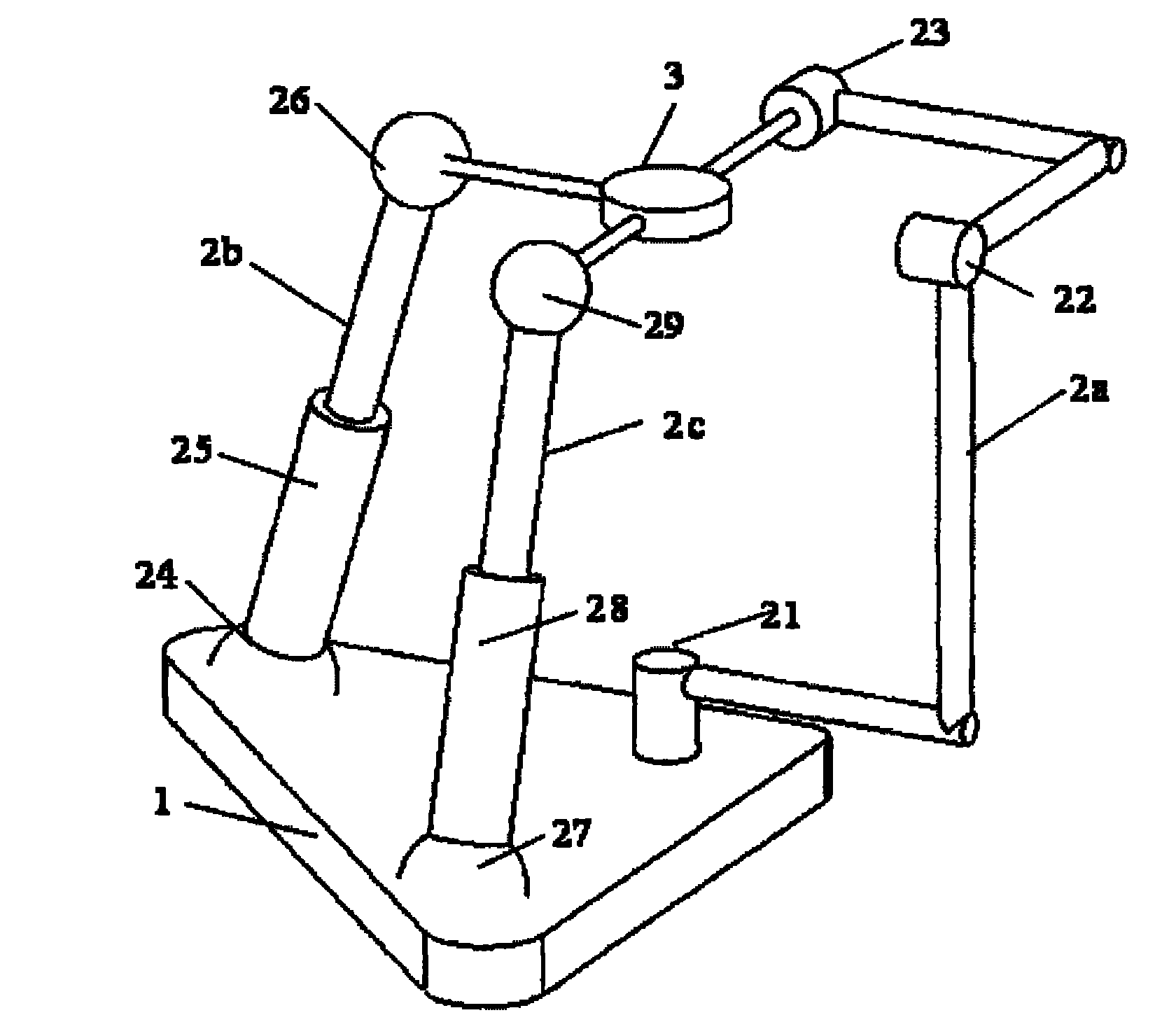Decoupled three-rotational-degree-of-freedom parallel mechanism
A three-rotation, degree-of-freedom technology, applied in the directions of manipulators, manufacturing tools, joints, etc., can solve the problems of complex parallel mechanism control, weak coupling of pose parameters, and changes in pose parameters, and achieve fast motion response, simple control, and rotational inertia. small effect
- Summary
- Abstract
- Description
- Claims
- Application Information
AI Technical Summary
Problems solved by technology
Method used
Image
Examples
Embodiment 1
[0012] A decoupled three-rotation-degree-of-freedom parallel mechanism consists of a frame 1, a moving platform 3, and a first kinematic branch chain 2a, a second kinematic branch chain 2b, and a third kinematic branch chain fixedly connected between the frame and the moving platform. The first motion branch chain 2a includes a Z-axis rotation pair 21, an X-axis rotation pair 22, and a Y-axis rotation pair 23. The second motion branch chain 2b includes a first ball joint 24, a first movement pair 25. The second ball joint 26, the third motion branch chain 2c includes the third ball joint 27, the second moving joint 28, the fourth ball joint 29, the Z-axis rotating joint 21, the first ball joint 24, The third ball hinge 27 is installed on the frame 1, and the three rotary axes of the first motion branch chain 2a meet at the center point of the platform 3, and the second ball hinge 26 and the fourth ball hinge 29 are connected to the moving platform 3, The sphere center of the s...
PUM
 Login to View More
Login to View More Abstract
Description
Claims
Application Information
 Login to View More
Login to View More - R&D
- Intellectual Property
- Life Sciences
- Materials
- Tech Scout
- Unparalleled Data Quality
- Higher Quality Content
- 60% Fewer Hallucinations
Browse by: Latest US Patents, China's latest patents, Technical Efficacy Thesaurus, Application Domain, Technology Topic, Popular Technical Reports.
© 2025 PatSnap. All rights reserved.Legal|Privacy policy|Modern Slavery Act Transparency Statement|Sitemap|About US| Contact US: help@patsnap.com

